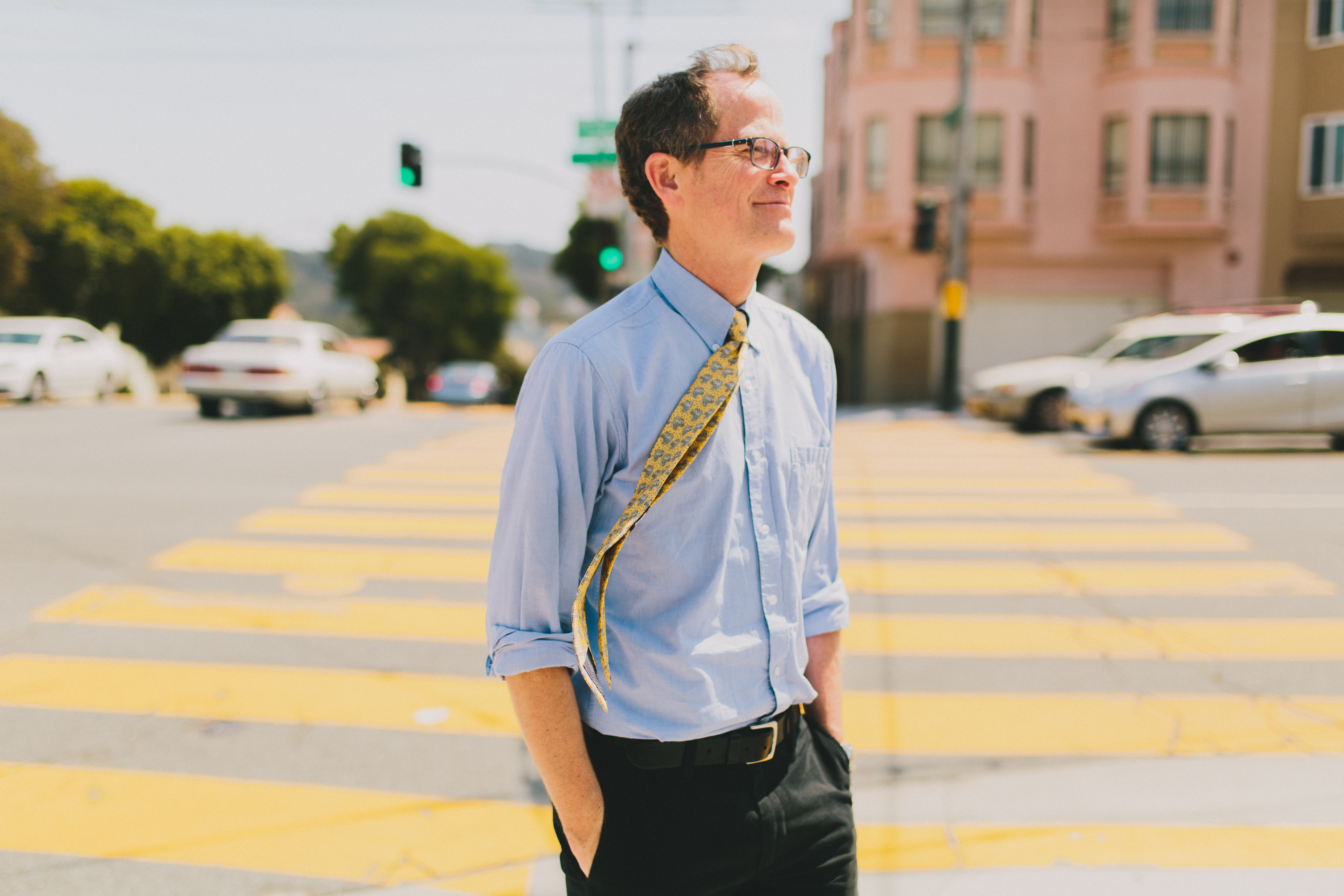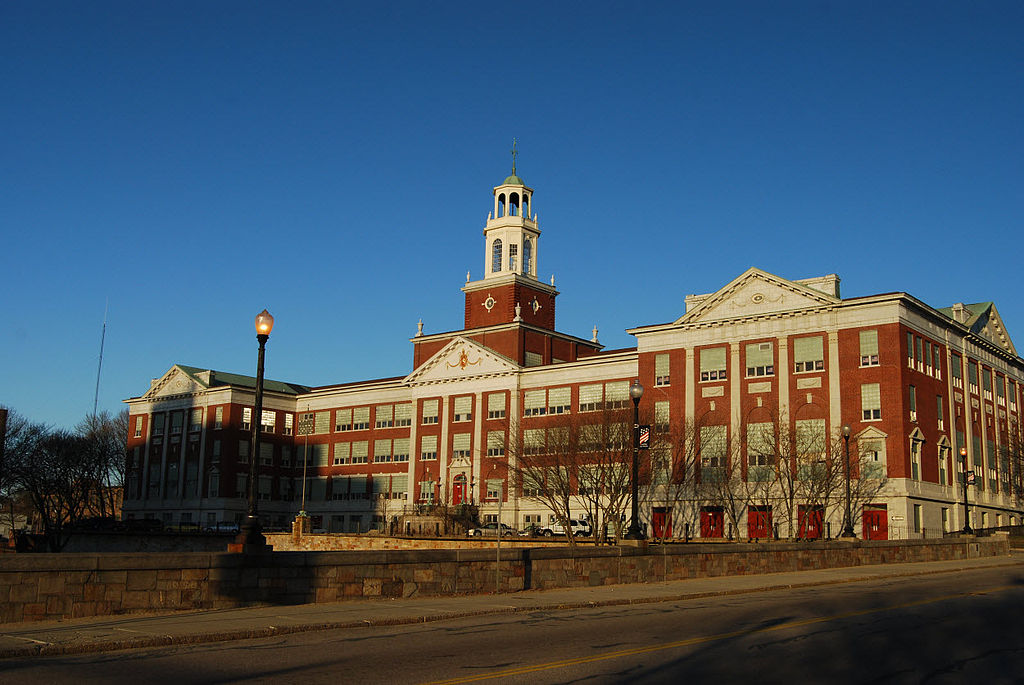Reflection on Tolman

David Donahue
Director, Leo T. McCarthy Center
As I prepare to teach “Urban School Reform,” an elective in the Masters of Arts in Urban Affairs program, I googled William E. Tolman High School in Pawtucket, Rhode Island, the school where I began my teaching career over thirty years ago as a student teacher.  The first page of entries included links with titles like, “Pawtucket launches inquiry into student ‘takedown’ at Tolman” and “Students pepper-sprayed, cuffed during Tolman HS protest.” The first three entries on the Wikipedia page for the high school are “Thanksgiving football rivalries,” “dropout rate,” and “security issues.” According to the Wikipedia report, only 54% of the schools first year students go on to graduate, a dropout rate that resulted in the school being labeled a “dropout factory” in a Johns Hopkins study. The security issues section is a depressing catalog of shootings and violence in and around the school. I’m not sure what’s sadder: that the school began requiring photo IDs for all students to improve security or that the photo ID program was eventually dropped for lack of funding. The district is considered the most racially diverse in the state. It’s also one of the poorest. Approximately 70% of the school’s students qualify for free lunch. The photo of Tolman reminded me that even in the 1980s almost all the windows had been replaced by glass bricks, allowing opaque light into classrooms, but leaving no possibility for gazing outside. The online picture of Tolman High School follows a familiar narrative of urban public education: Schools serving mostly poor, mostly students of color, places of violence, places of academic despair.
The first page of entries included links with titles like, “Pawtucket launches inquiry into student ‘takedown’ at Tolman” and “Students pepper-sprayed, cuffed during Tolman HS protest.” The first three entries on the Wikipedia page for the high school are “Thanksgiving football rivalries,” “dropout rate,” and “security issues.” According to the Wikipedia report, only 54% of the schools first year students go on to graduate, a dropout rate that resulted in the school being labeled a “dropout factory” in a Johns Hopkins study. The security issues section is a depressing catalog of shootings and violence in and around the school. I’m not sure what’s sadder: that the school began requiring photo IDs for all students to improve security or that the photo ID program was eventually dropped for lack of funding. The district is considered the most racially diverse in the state. It’s also one of the poorest. Approximately 70% of the school’s students qualify for free lunch. The photo of Tolman reminded me that even in the 1980s almost all the windows had been replaced by glass bricks, allowing opaque light into classrooms, but leaving no possibility for gazing outside. The online picture of Tolman High School follows a familiar narrative of urban public education: Schools serving mostly poor, mostly students of color, places of violence, places of academic despair.
I know from my experience teaching at Tolman there and my subsequent years working with teachers in districts like Oakland and San Francisco that this is such a biased and incomplete picture of urban schools . What stands out from my experience at Tolman is the brilliance and hard work of students. I remember students from Puerto Rico, Cape Verde, and Cambodia in my 11th grade U.S. history class navigating the English they were still learning to debate whether the city should have a nativity scene in front of City Hall during Christmas, to discuss whether it was fair that only “natural born” citizens could become President of the United States, and to share with each other a “coming to America story” from their own lives or someone in their family. Those who doubt the intelligence of adolescents should have observed that class. This very first teaching experience convinced me about the truth behind a statement that has almost become cliché: All children can learn. Those who say that urban school teachers are lazy and academically mediocre should have met my cooperating teacher, a man with a PhD from Notre Dame who returned to teach at Tolman, the high school he graduated from, because he believed in public education. His dedication, thoughtfulness, and intelligence were inspiring. Sadly, stories of urban school failure focus on the actors — students and teachers — as the problem, rather than the larger political and economic contexts that result in the unequal distribution of resources for education, the segregation of children by race, and the reproduction and legitimization of inequality in our nation. My years of teaching children and working with teachers convince me that children and teachers are not the problem. Larger social inequities are. Meaningful school reform has to be part of larger efforts to eradicate poverty, end racism, and strengthen democracy.
My experience teaching and preparing others to work in urban schools shapes my elective course on urban school reform in the United States. While school reform suffers no shortage of market driven calls to tear schools down in order to rebuild them, I’ve come to understand that creating schools to support meaningful, rigorous, and joyful learning requires listening to a variety of perspectives, including those of teachers and students as well as researchers and policy makers. My experience also teaches me that schools do not stand apart from society but reflect and reproduce it. As part of the course, we will hold a joint class with students from a nearby San Francisco public high school. We will also interact with teachers and administrators in the middle of making city schools work for diverse students to hear voices that are not always reflected in monographs of school reform. We will work with Californians for Justice, an Oakland-based advocacy organization, to document the benefits of social emotional learning so they can make the case for strategies to support students of color, immigrant students, LGBTQ students, and students from low income families in urban schools. My goal is to spend as much time learning in and from real teachers, students, and social justice advocates as from the scholars who can provide us with new lenses to understand urban education.
Far from a place of despair, Tolman remains for me a place of hopefulness, not because it works as it is, but because it’s not impossible to imagine schools that do work for the students who go there. I still believe classrooms are places of joy and possibility, of transformation and growth. That’s why I so look forward to teaching my first class at USF this fall. I can’t wait to work with the students in Urban Affairs to understand why city schools are the way they are, to imagine them as they could be, and to begin working towards more just and equitable education for young people in the Bay Area.

